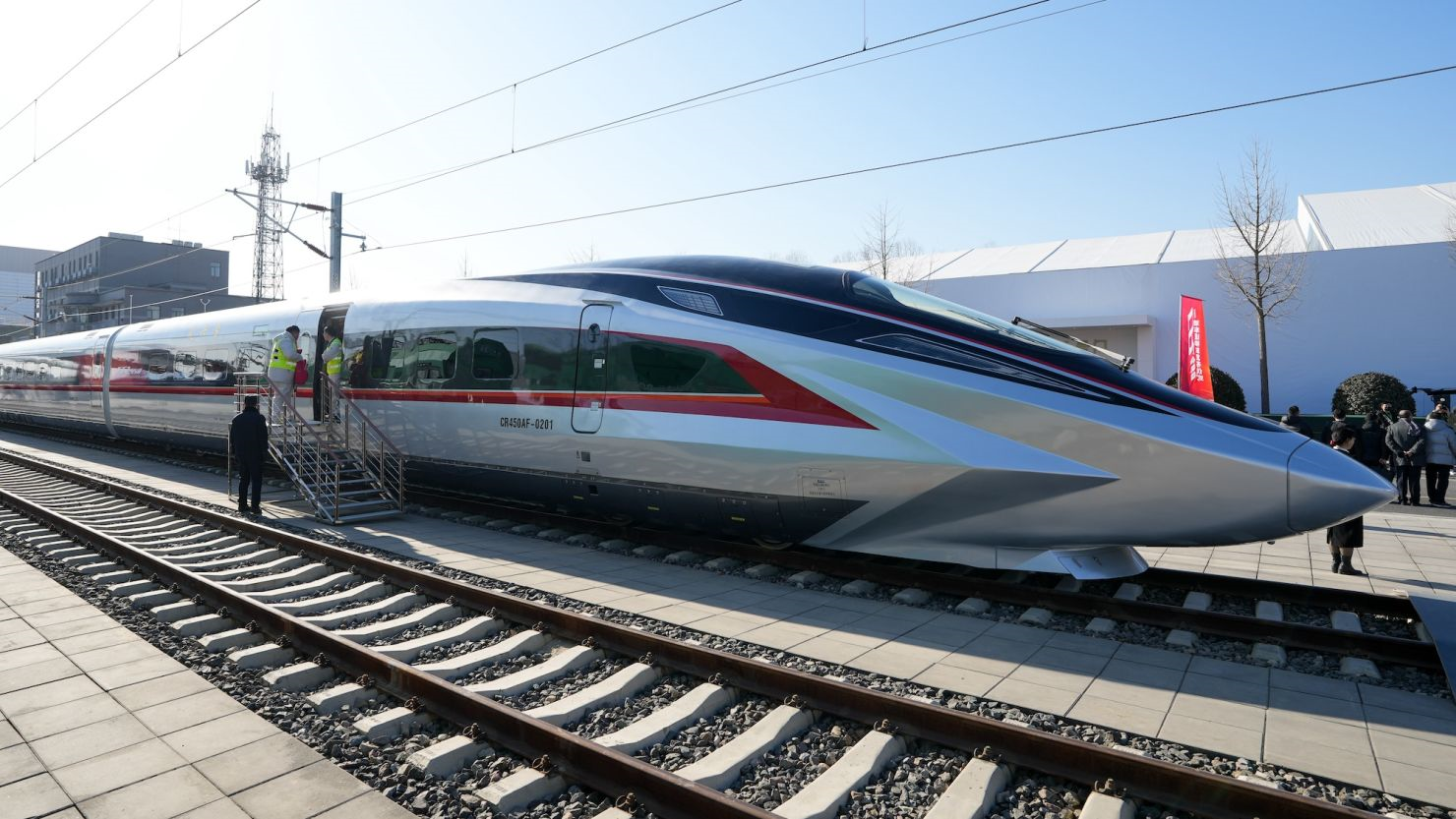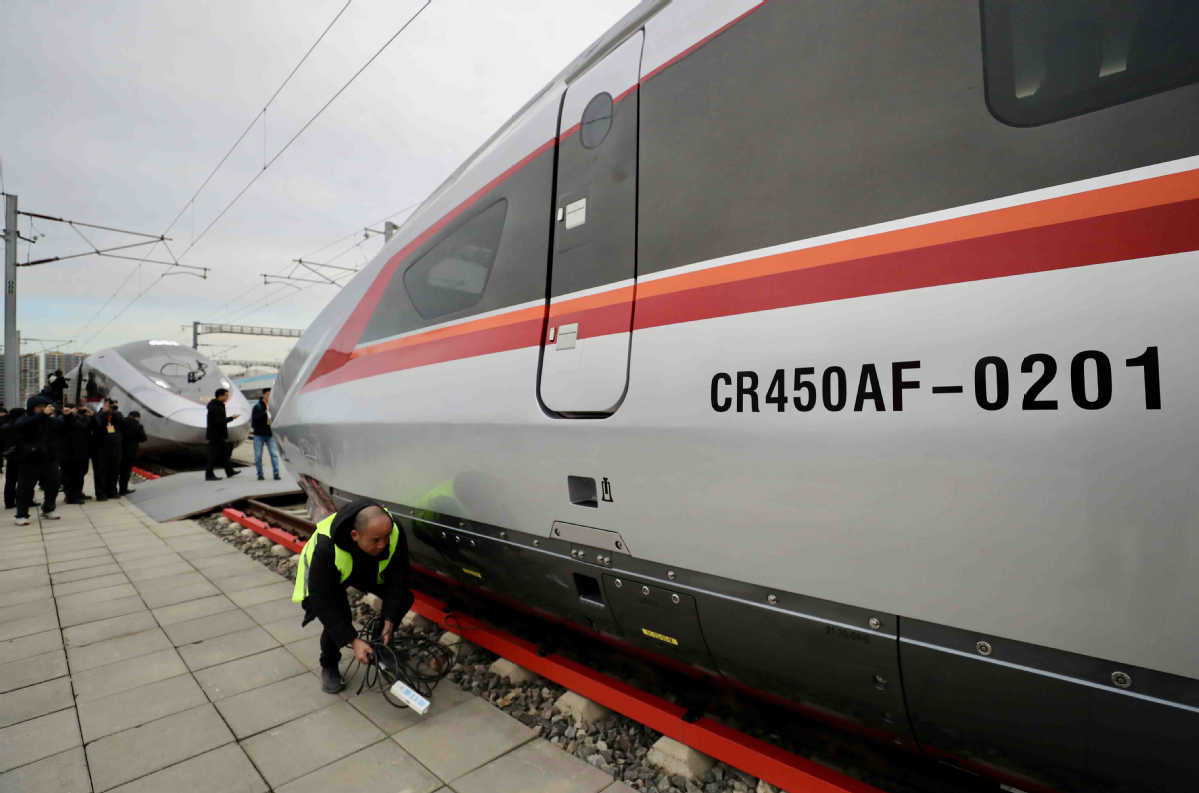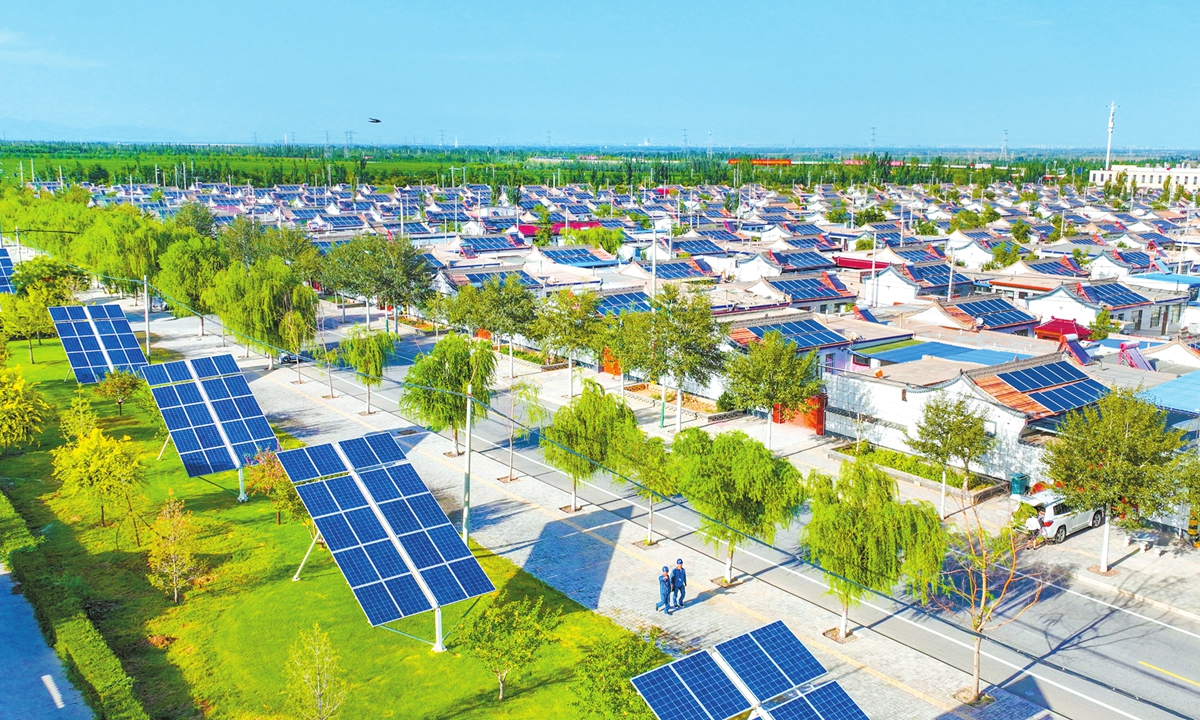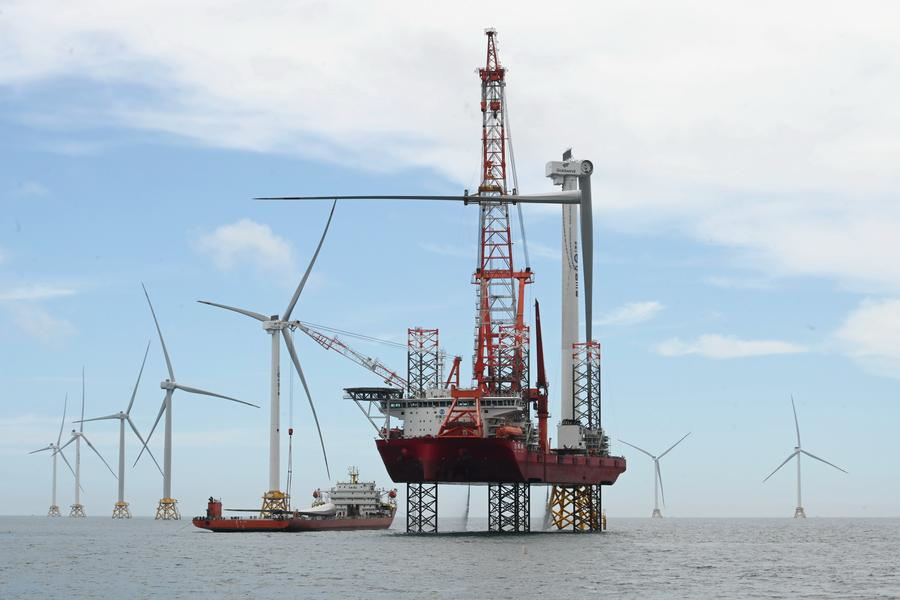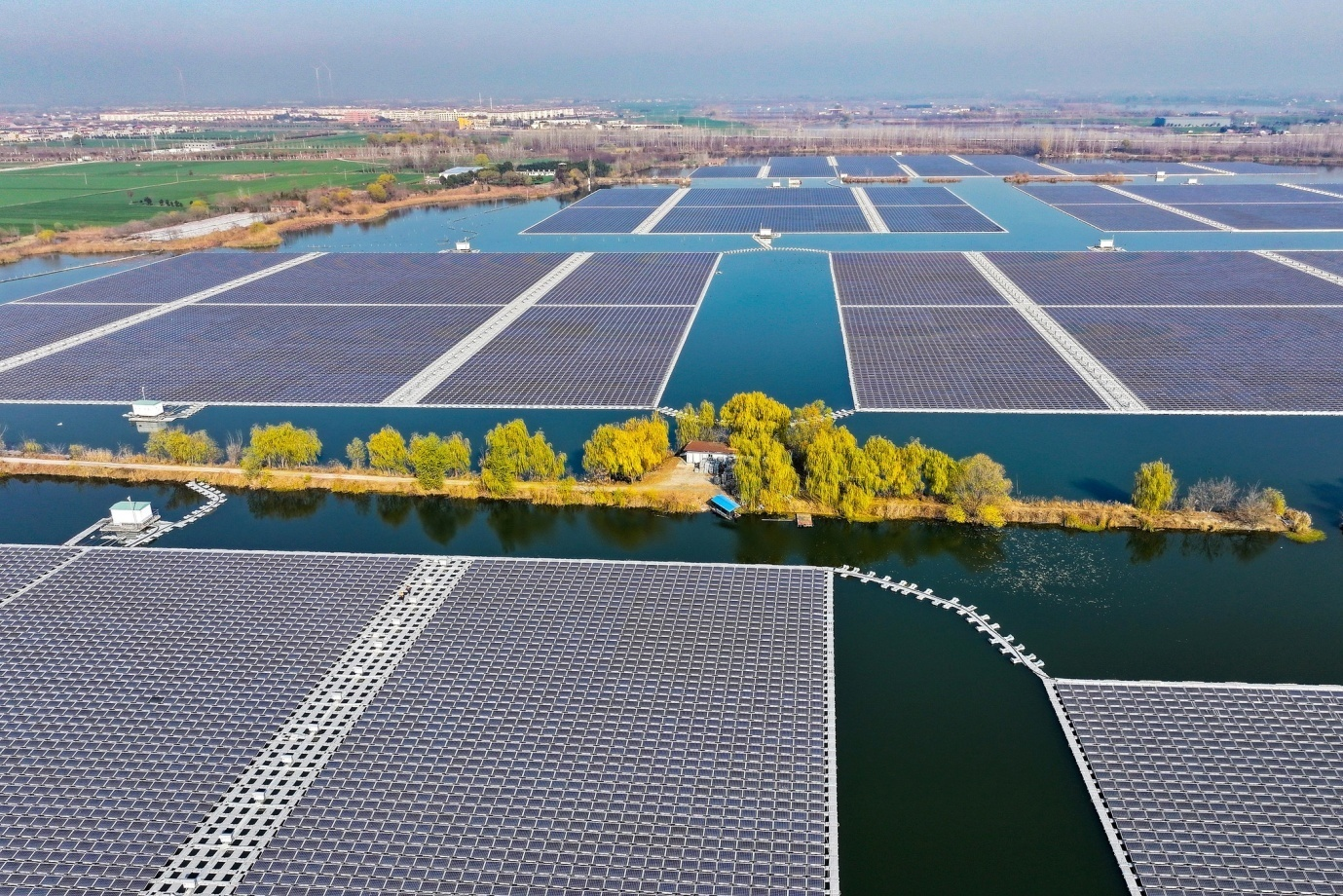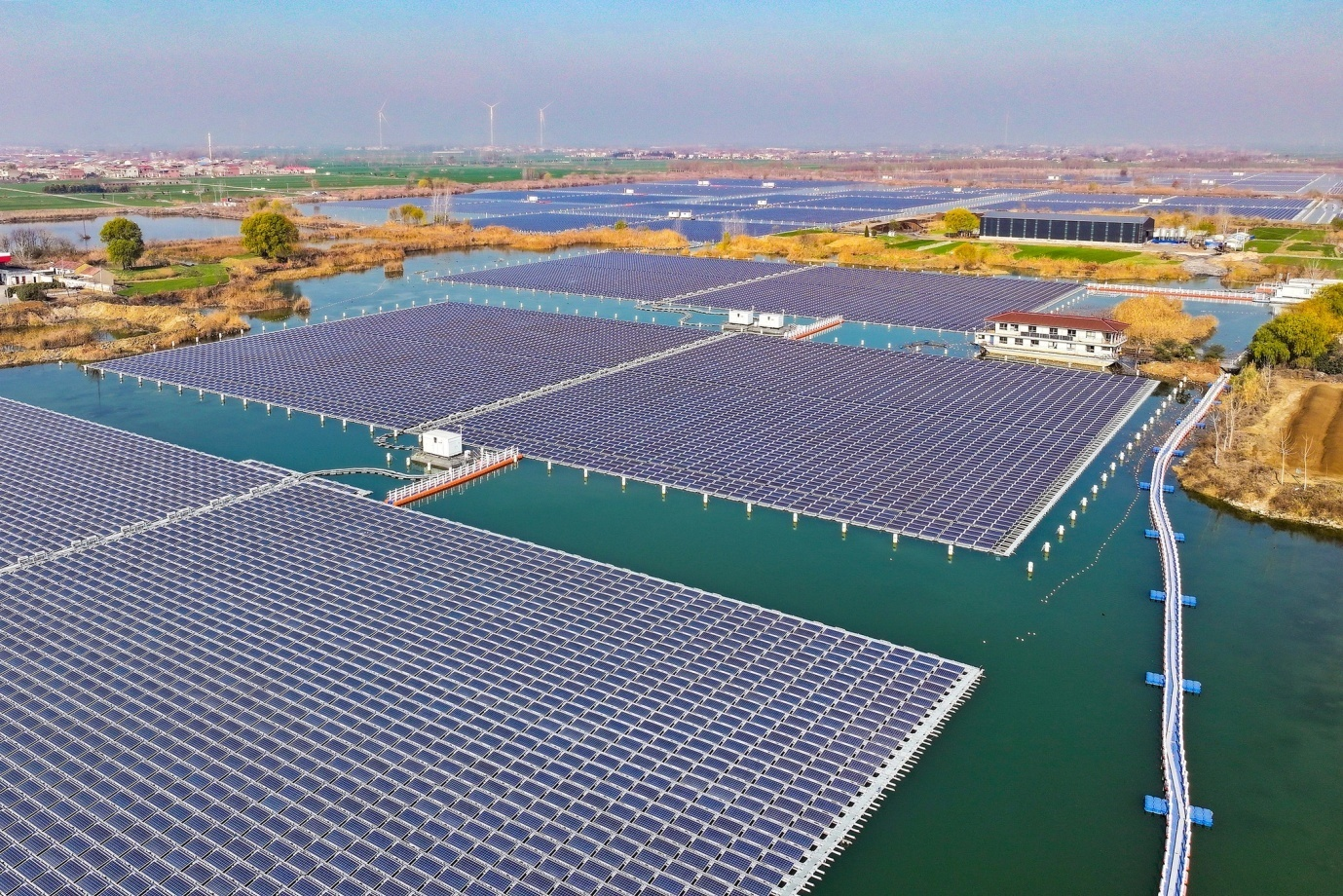China Tech Innovation
China Technological Innovation, Research & Development (R&D)
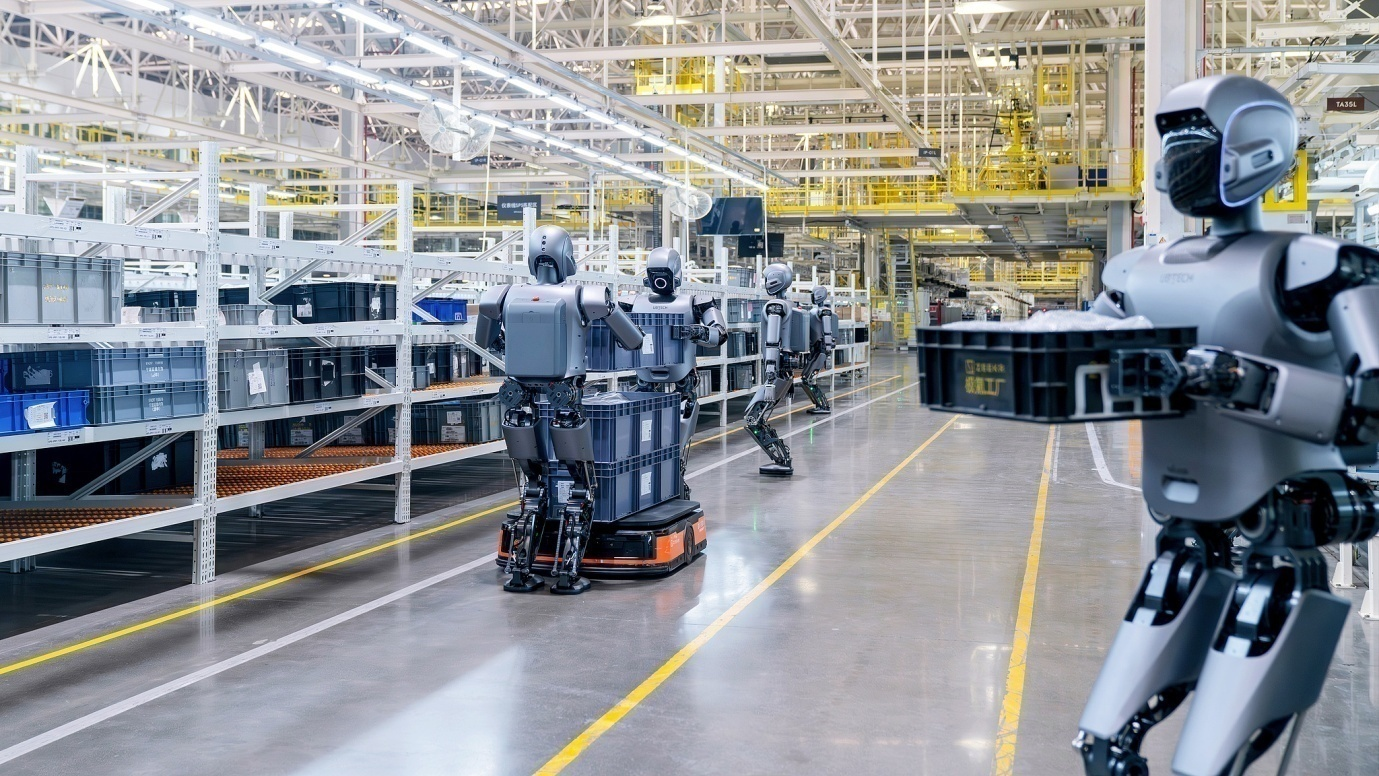

Over the last decade, China has made remarkable progress in leveraging cutting-edge technologies including artificial intelligence, robotics, quantum computing, Internet of Things and space technology to reformat its productive capacities and improve efficiency in various industries including transportation, manufacturing, mining, agriculture, education and healthcare – shifting the Chinese economy from low-productivity and labor-intensive activities to high productivity, capital and skill-intensive activities.
How does 5G technology impact China’s development?
‘‘Since the reform and opening up in 1978, China, for more than three decades, has witnessed rapid economic expansion that is driven mainly by low-cost manufacturing and investments. From 1979 to 2012 and 2013 to 2022, the Chinese economy grew at an average annual rate of 9.9% and 6.2%, respectively. During these periods, China's high-speed growth lifted millions of people from poverty and contributed to the building of a moderately prosperous society in all respects by 2021, successfully accomplishing the first centenary goal. Presently, faced with an array of new issues, including rising labor cost and increasing international competition, China has embarked on a new journey to achieve high-quality development as it pursues the second centenary goal: to build a modern socialist country that is prosperous, strong, democratic, culturally advanced and harmonious by the middle of 21st century.
To accomplish this daunting task, China is transitioning from traditional economic growth models and pathways to high-quality development characterized by economic resilience and sustainable endogenous growth that is mainly driven by science and technological innovation.’’ – Excerpt from the Ghana Centre for China Studies (GCCS) publication titled ‘‘China strives for high-quality development with 5G technology’’ jointly published with the China Internet Information Center and republished by Beijing Review.
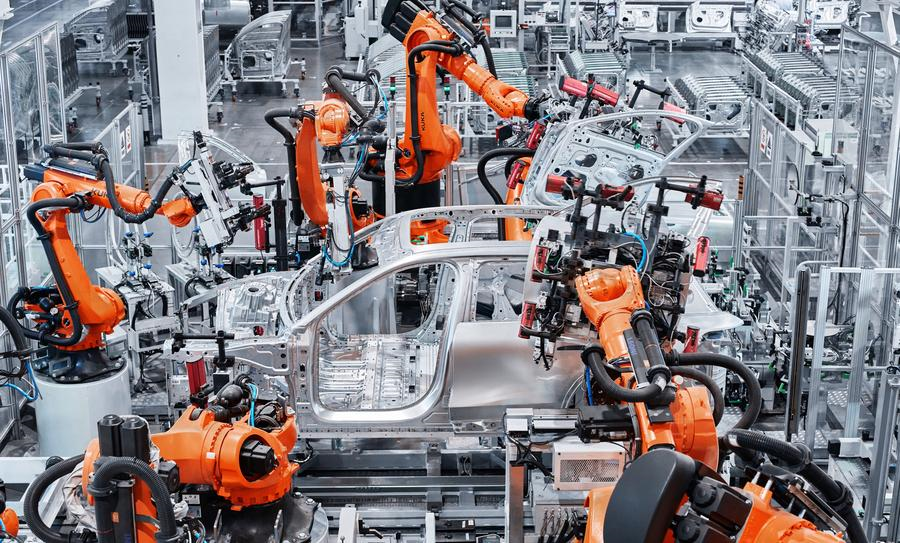
AI is Shaping China’s Industries. Here’s why
‘‘Over the last decade, China has strived to build a solid foundation to support its AI economy, and intensified actions to upgrade traditional sectors of the economy and foster emerging industries by leveraging cutting-edge technologies including artificial intelligence. During this period, the Chinese government issued a slew of policies including the AI Security Governance Framework (2024) and the ‘‘Next Generation Artificial Intelligence Development Plan’’ launched in 2017, which sets ambitious goals, seeking to establish AI technology as a key driver of economic transformation by 2025 and position China as the global hub for AI innovation by 2030. Benefitting from policies which aim to spur innovation and technological development while tackling emerging risks, China’s AI economy has witnessed significant progress, with AI increasingly becoming an indispensable driving force for a new round of technological revolution and industrial transformation.
According to the Ministry of Industry and Information Technology, at present China is home to more than 4, 400 AI firms, with the total scale of its core AI industry scale valued at 500 billion yuan (about US$70 billion). Efforts to integrate AI into China’s primary, secondary and tertiary industries has unlocked new growth drivers, helping to cultivate new quality productive forces, thus, advanced productivity freed from the traditional economic growth mode and productivity development paths. In the case of Chinese manufacturing industry ranked first globally in terms of overall scale for the last 15 years, an essential pillar of the world economy, AI adoption is transforming all aspects of manufacturing, driving efficiency, sustainability, and profitability. With the manufacturing industry hamstrung by various challenges linked to production and operations, efforts to integrate smart technologies such as AI helps Chinese manufacturers to optimize processes, predict maintenance needs, and improve product quality, contributing to reducing manufacturing costs and harmful emissions.
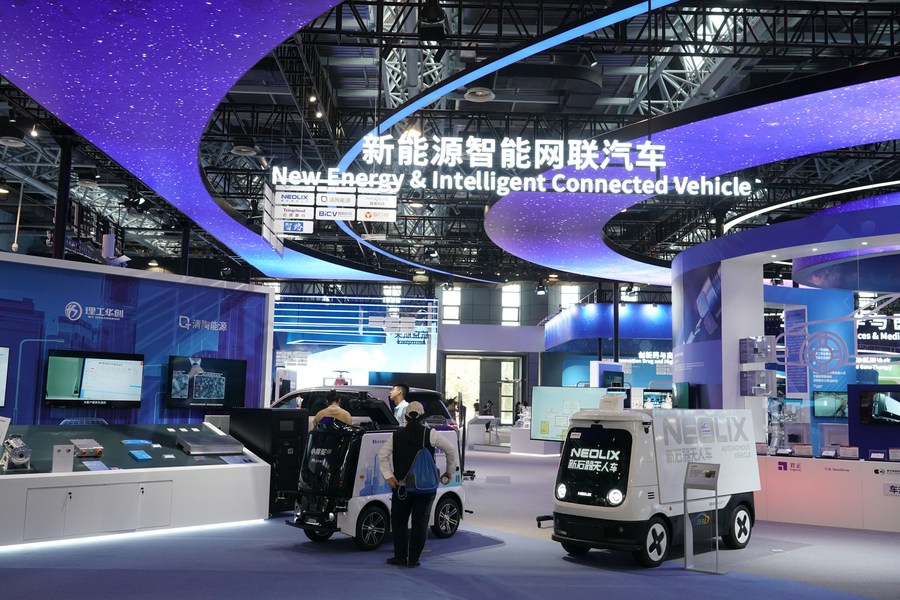
In recent years, application of cutting-edge technologies such as AI has been a game changer for the manufacturing industry, facilitating the rapid adoption of smart manufacturing. According to a Deloitte Survey on AI adoption in manufacturing, China’s performance in AI adoption is outstanding, with the market size of AI in the manufacturing sector expected to exceed US$2 billion this year, posting average annual growth of over 40 percent from 2019. Similarly, in the agriculture sector, AI adoption which integrates smart technologies including machine learning, drone applications and remote sensing for comprehensive farm management have enabled farmers to leverage AI’s transformative force to redefine traditional farming practices, promoting sustainable farming practices, reducing environmental impact, and boosting profitability.
Thanks to these essential benefits, efforts to integrate smart technologies into the agriculture value chain continues to gain traction, creating new employment opportunities in the sector, particularly in AI machine learning, software development, and data science. Compared to a few decades ago, agriculture has become attractive to young people in China with smart farming opening up new career paths in the sector such as automation engineers, data analysts, agricultural technology consultants, and precision agriculture specialists, infusing new possibilities into agriculture development and rural revitalization. To further accelerate the digital transformation of the entire agricultural industry chain, China in October last year issued the National Smart Agriculture Action Plan (2024-2028). According to the plan, China will leverage advanced technologies including AI, the Internet of Things (IoT), and big data to improve efficiency, boost productivity and promote sustainable practices across the agriculture sector. Given agriculture is linked to all sectors of the Chinese economy – with the sector providing raw materials for processing industries, and influencing the services sector via activities like transportation and finance, and also serving as a major source of employment and food security. Ultimately, enhanced efforts to drive digital transformation of the entire agriculture value chain, now and into the future will unlock new opportunities to nurture new quality productive forces across various industries, fuelling innovation, and fostering high-tech industries and viable economic models that leverage smart technologies like AI to spur high-quality growth and development. By 2030 China aims to expand its core AI industry to more than 1 trillion yuan (US$140 billion) and to boost related industries to over 10 trillion yuan (US$1 trillion) during the same period.’’ – Excerpts from the Ghana Centre for China Studies (GCCS) publication titled ‘‘Rise of AI Technology: New Quality Productive forces Inject Momentum into Chinese Economy’’ published in a joint collaboration with the China Internet Information Center.
The China Railroad Diary

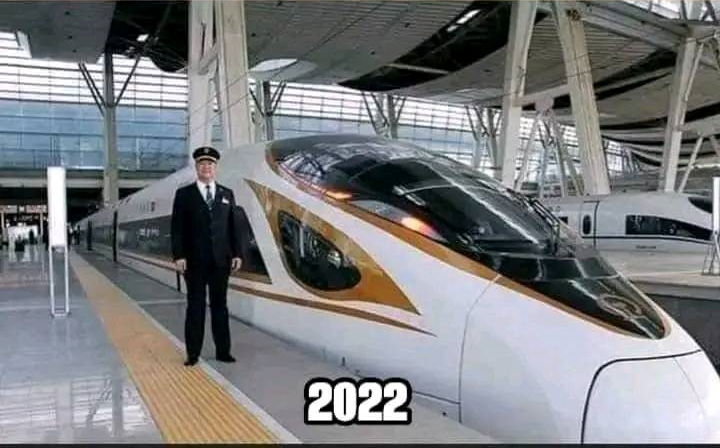
The photo above shows Han Junjia, a Chinese train driver standing beside two different trains. The first picture, taken in 1996 shows Han Junjia standing next to the engine of a locomotive train, and in the second photo taken in 2022, he posses with a fuxing bullet train. “When I was young, I wanted to be a train driver,” Han Junjia said, explaining that his childhood dream had been to drive the fastest train possible. Little did he know, as a boy, that there would one day be a train that could drive 350 kilometres per hour. When Han first entered the industry, the maximum speed of steam locomotives was 56-60 kilometres per hour, and drivers dealt with harsh working conditions.
Han started his career as a stillman. During this time all he needed for work was a multipurpose lunchbox, which could be used as a pot to reheat rice, a container to drink water from and a seat in case he got tired. In 1996, Han became a diesel locomotive driver. He was delighted because the driver’s cabin was upgraded, and new train facilities were added such as a monitoring system, a temperature detector and a rear view mirror, making work more manageable. However, Han said the diesel trains were so loud so that he and his colleagues had to shout in order to communicate with each other.

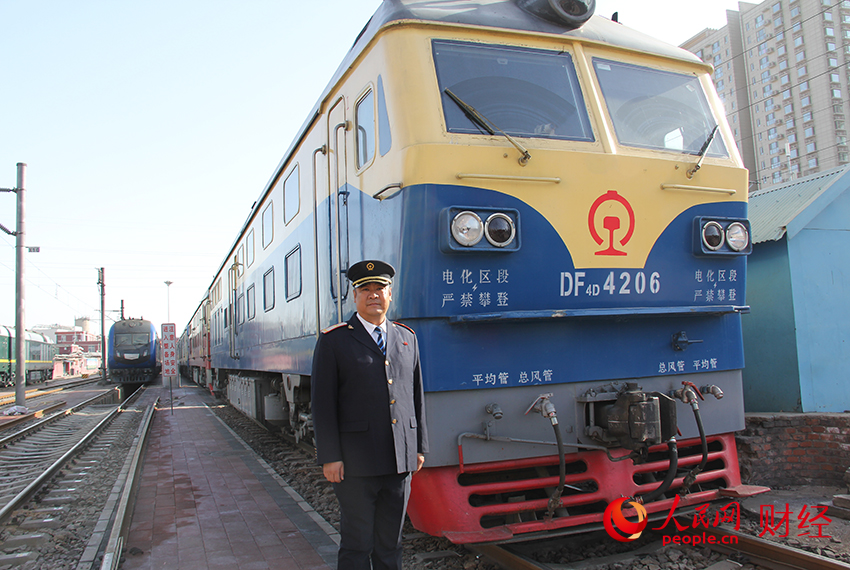
In 2008, there was a breakthrough in China's railway development when electric trains were introduced throughout the country. The speed increased from 120 km per hour to 160 km per hour, and the new electric trains were much safer as computers controlled them.
In 2009, Han signed up as a high-speed train driver along the Beijing-Shanghai route, which was still under construction at the time, and in November 2010, Han became a high-speed train driver. He said the train's beautiful interior, futuristic design and incredible speed impressed him.
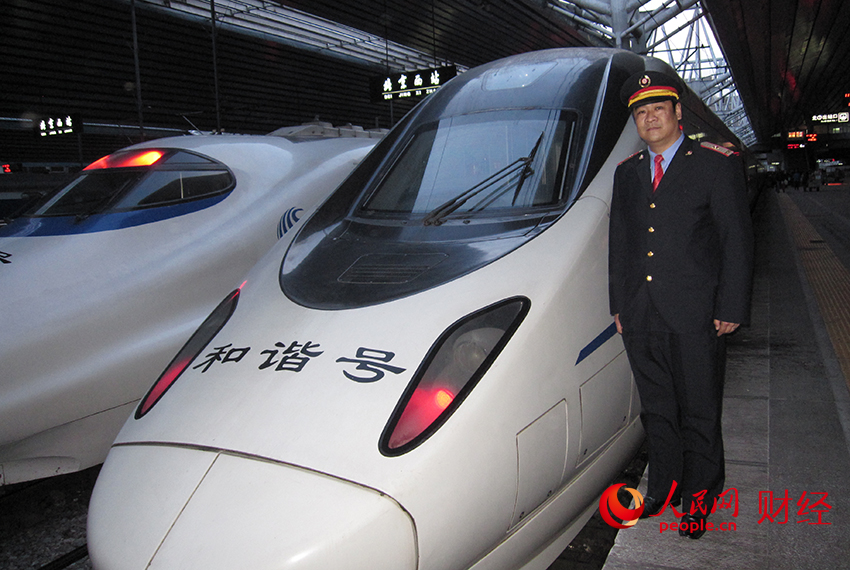

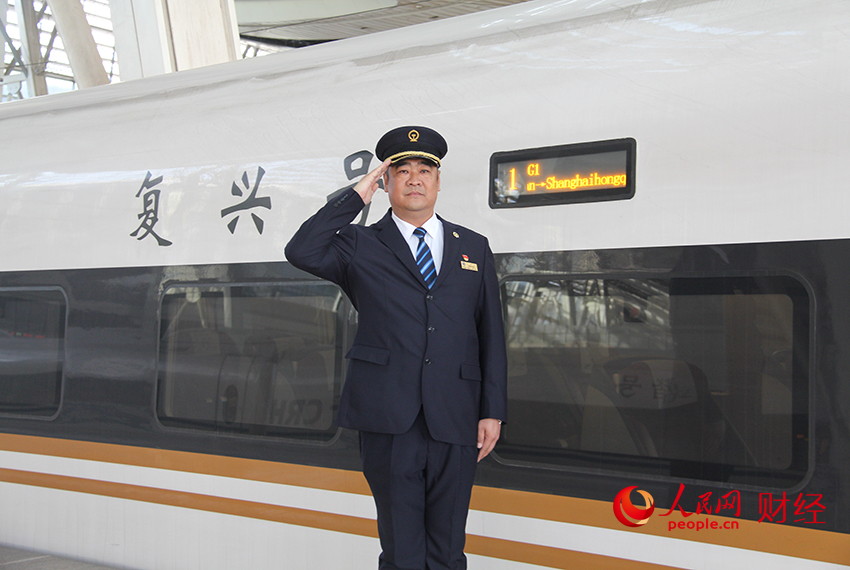
On Sept. 21, 2017, Han became a Fuxing bullet train driver. These trains, which are developed in China, are
designed to run at a speed of 350 kilometers per hour. In July 2018, sixteen lengthened Fuxing Bullet trains
went into operation.
“Whenever I drove a new train, I felt the progress of the country’s rail technology,” said Han. Credit:
People’s Daily
China's High-Speed Railway Map (2008 vs.2020)
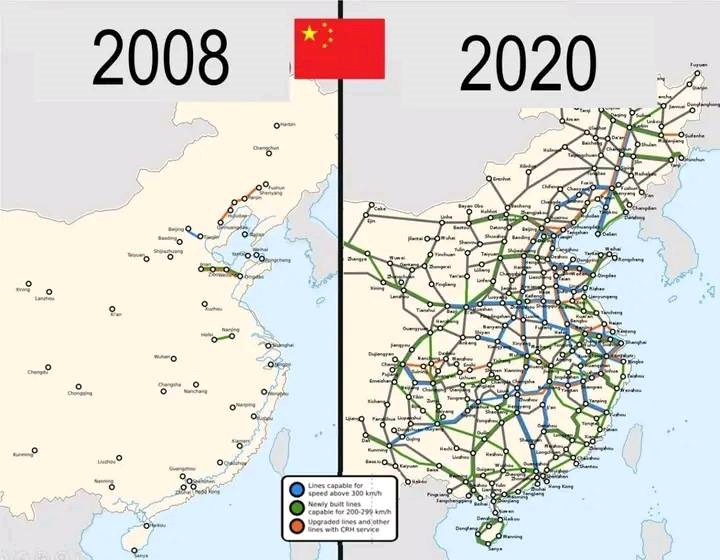
In 2024 China unveiled 450 km/h high-speed train prototype
On December 29, 2024 the CR450 EMU (electric multiple units) high-speed train, China's most recently designed high-speed bullet train model, debuted in Beijing. With a test speed of 450 kilometres per hour, the CR450 at present is the world’s fastest train.
Cutting-edge Technologies and Chinese Modernization
‘‘In the latter part of April 2023, a scientific research team in China successfully completed the country's first full-size superconducting test run for an ultra-high-speed magnetic levitation (maglev) train. Combining maglev technology with low vacuum technology, the train, which will become the fastest means of on-ground transport once completed, will be capable of running up to 1,000 kilometers per hour. Home to by far the world's largest high-speed railroads network – with 155,000 km of railways in operation, including 42,000 km of high-speed lines as of the end of 2022, the addition of ultra-high speed magnetic trains to China's rail network, will further truncate travel time for people and cargo – improve economic efficiency and significantly reduce greenhouse gas emissions – promoting the harmonious coexistence of people and nature, the bedrock of Chinese modernization.
In the country's pursuit of modernization, thus, Chinese modernization, a unique development pathway for more than 1.4 billion people – prioritizing common prosperity for all and promoting peaceful coexistence of mankind and the natural environment, China has increasingly leveraged cutting-edge technologies, including high-speed railroads and the internet of things to drive development – these tools were central to concerted efforts dedicated to achieve the first centenary goal – they ensured that the country's development improved the lives of its people.’’ – Excerpt from the Ghana Centre for China Studies (GCCS) publication titled ‘‘Cutting-edge technologies central to Chinese Modernization,’’ published in a joint collaboration with China Daily.
How did China become a rising star in global innovation?
In just a decade, China moved from 34th position on the Global Innovation Index in 2012, to breaking into the world's top 20 most innovative economies for the first time in 2018 and being ranked 11th in 2022. How did China achieve this feat?
‘‘Data from the National Bureau of Statistics on January 20, 2023, show that in 2022 China's research and Development (R&D) expenditure reached a new record of $455 billion, growing by 10.4 percent year on year. The expenditure account for a record 2.55 percent of gross domestic product (GDP) in 2022, thus, 0.12 percentage point higher than 2021 – a growing trend in China's R&D expenditure, which has lasted for more than two decades, and eventually yielded remarkable outcome – significantly boosting the quality and quantity of invention patents and increasingly driving innovation across various sectors of the economy.
Recently, China National Intellectual Property Administration (CNIPA), the country's top intellectual property regulator revealed that a total of 798,000 invention patents were authorized in 2022, representing a significant upswing in quality and quantity of invention patents. By the end of 2022, a total of 4.21 million valid invention patents were recorded in the country, with inventors in the Chinese mainland accounting for the largest share – 3.28 million – thus, marking another milestone in China's burgeoning patent filings.
For more than a decade, China has experienced rapid growth in patent filings, surpassing the United States in 2019 to become the world's largest filer of international patents – and also overtaking the U.S. in 2021 to become home to the top jurisdiction with the highest active patents in force.
As the bedrock of innovation, China's numerous inventions across diverse fields, protected by patents, are increasingly driving innovations and bolstering productivity across various industries in the country.
According to an annual survey issued by CNIPA, the industrialization transfer rate of China's effective patent in 2022 reached a five-year high of 36.7 percent, signifying an increasing support that the country's intellectual property protection provides for the innovative development of the economy, a huge contribution that is not limited to China. In fact, China's outstanding progress in R&D, gained over the years, has a remarkable global impact in several fields.
For example, the country's R&D in renewable energy has yielded unprecedented impact – both at the national and global levels – almost single-handedly advancing renewable energy research, which is crucial to the success of the global clean energy transition.
According to a report by Elsevier, annual patent publications for net-zero clean energy technologies have grown exponentially since 2008, driven largely by China. The report shows that, of the top 10 countries and regions, China had the largest patent portfolio in carbon-free energy technologies by 2015, after surpassing the United States in 2012 and Japan in 2014. By the end of 2020 nearly 50 percent of all active global patents originated in China.’’ – Excerpt from the Ghana Centre for China Studies (GCCS) publication titled ‘‘Chinese research and development: Key driver of global growth’’ published in a joint collaboration with the China Global Television Network (CGTN).
Some experts especially in Western countries have labelled China as "overcapacity," accusing the country of "flooding" the global market with cheap products and "distorting" the market rules. Is there overcapacity in China? Is the export of Chinese products an attempt to digest obsolete capacity or to revive the global economy? Will anti-China policies protect or harm Western industries? Find out more in the Ghana Centre for China Studies (GCCS) publication titled ‘‘Is China dumping obsolete capacity or contributing to global growth?’’
OUR IMPACT
- SOUTH AFRICA
-
-
This study conducted at the University of Johannesburg and published by the
Journal of BRICS Studies cites the GCCS publication titled ‘‘Digital Technologies
Improve Healthcare in China.’’
Journal article: Bridging the Digital Divide: Fostering STEM Education for Digital Economy Leadership
Download Journal article: See ref. no.20 for cited GCCS publication
-
This study conducted at the University of Johannesburg and published by the
Journal of BRICS Studies cites the GCCS publication titled ‘‘Digital Technologies
Improve Healthcare in China.’’
- CHINA
-
-
Journal article authored by professors at Zhejiang University of Technology
and
Harbin Engineering University and published by the Journal of Global
Information Management cites the GCCS publication titled "China's e-commerce market:
Benchmark for Global Retailing."
Journal article: Embrace Uncertainty: Using Consumer Inoculation to Combat Online Shopping Disconfirmation
Download paper: See pg.10 for cited GCCS publication
-
Journal article authored by professors at Zhejiang University of Technology
and
Harbin Engineering University and published by the Journal of Global
Information Management cites the GCCS publication titled "China's e-commerce market:
Benchmark for Global Retailing."
OUR PUBLICATIONS
- China’s High-Speed Rail: Fast Track to High-Quality Development.
- Rise of AI Technology: New Quality Productive forces Inject Momentum into Chinese Economy.
- China strives for high-quality development with 5G technology.
- Supporting higher education for sustainable development in China.
- Why is the ‘‘Next China’’ still China?
- Is China dumping obsolete capacity or contributing to global growth?
- E-commerce adoption in China: Fostering job creation and inclusive growth.
- Chinese research and development: Key driver of global growth.
- Cutting-edge technologies central to Chinese Modernization.
- Digital technologies improve healthcare in China.
- China’s adoption of smart technologies is protecting biodiversity.
- China’s smart agriculture: technologies for high-quality growth.
- Resilience amid adversity: How Huawei is weathering the storm?
- Connecting research with innovation: Is China setting the Pace?
- China’s innovation-driven approach for sustainable development.
- Fintech in China: Revolutionizing financial services.
- China’s e-commerce market: Benchmark for global retailing.
